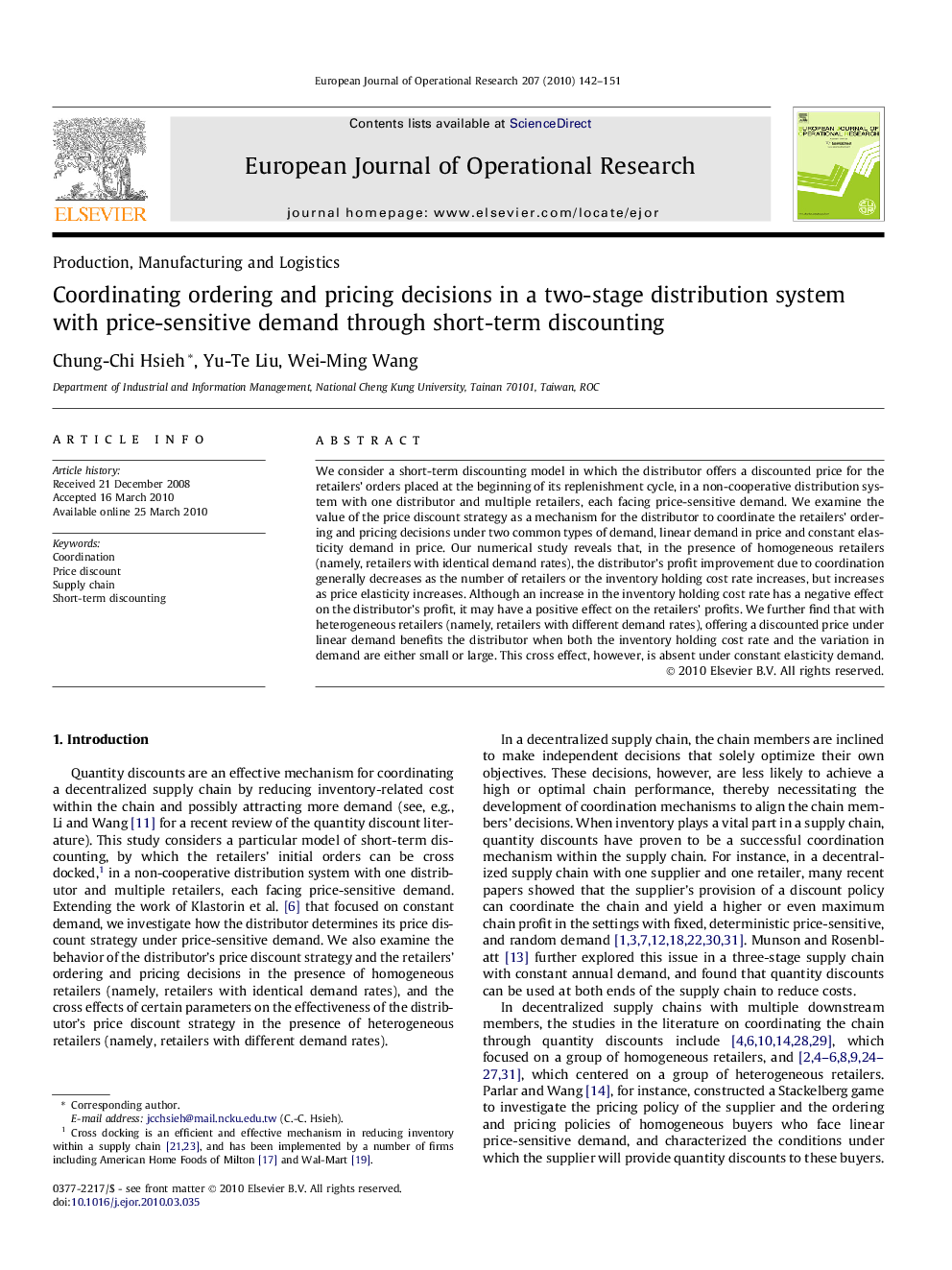| Article ID | Journal | Published Year | Pages | File Type |
|---|---|---|---|---|
| 481073 | European Journal of Operational Research | 2010 | 10 Pages |
We consider a short-term discounting model in which the distributor offers a discounted price for the retailers’ orders placed at the beginning of its replenishment cycle, in a non-cooperative distribution system with one distributor and multiple retailers, each facing price-sensitive demand. We examine the value of the price discount strategy as a mechanism for the distributor to coordinate the retailers’ ordering and pricing decisions under two common types of demand, linear demand in price and constant elasticity demand in price. Our numerical study reveals that, in the presence of homogeneous retailers (namely, retailers with identical demand rates), the distributor’s profit improvement due to coordination generally decreases as the number of retailers or the inventory holding cost rate increases, but increases as price elasticity increases. Although an increase in the inventory holding cost rate has a negative effect on the distributor’s profit, it may have a positive effect on the retailers’ profits. We further find that with heterogeneous retailers (namely, retailers with different demand rates), offering a discounted price under linear demand benefits the distributor when both the inventory holding cost rate and the variation in demand are either small or large. This cross effect, however, is absent under constant elasticity demand.
